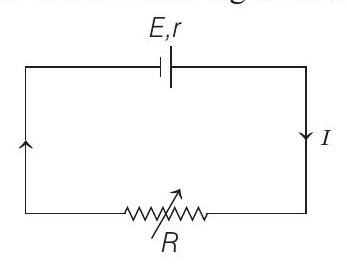Current Electricity 3 Question 3
3. A cell of internal resistance
(8 April 2019, II)
(a)
(b)
(c)
(d)
Show Answer
Solution:
- Given circuit is shown in the figure below

Net current,
Power across
For the maximum power,
Alternate Solution
From maximum power theorem, power dissipated will be maximum when internal resistance of source will be equals to external load resistance, i.e.






